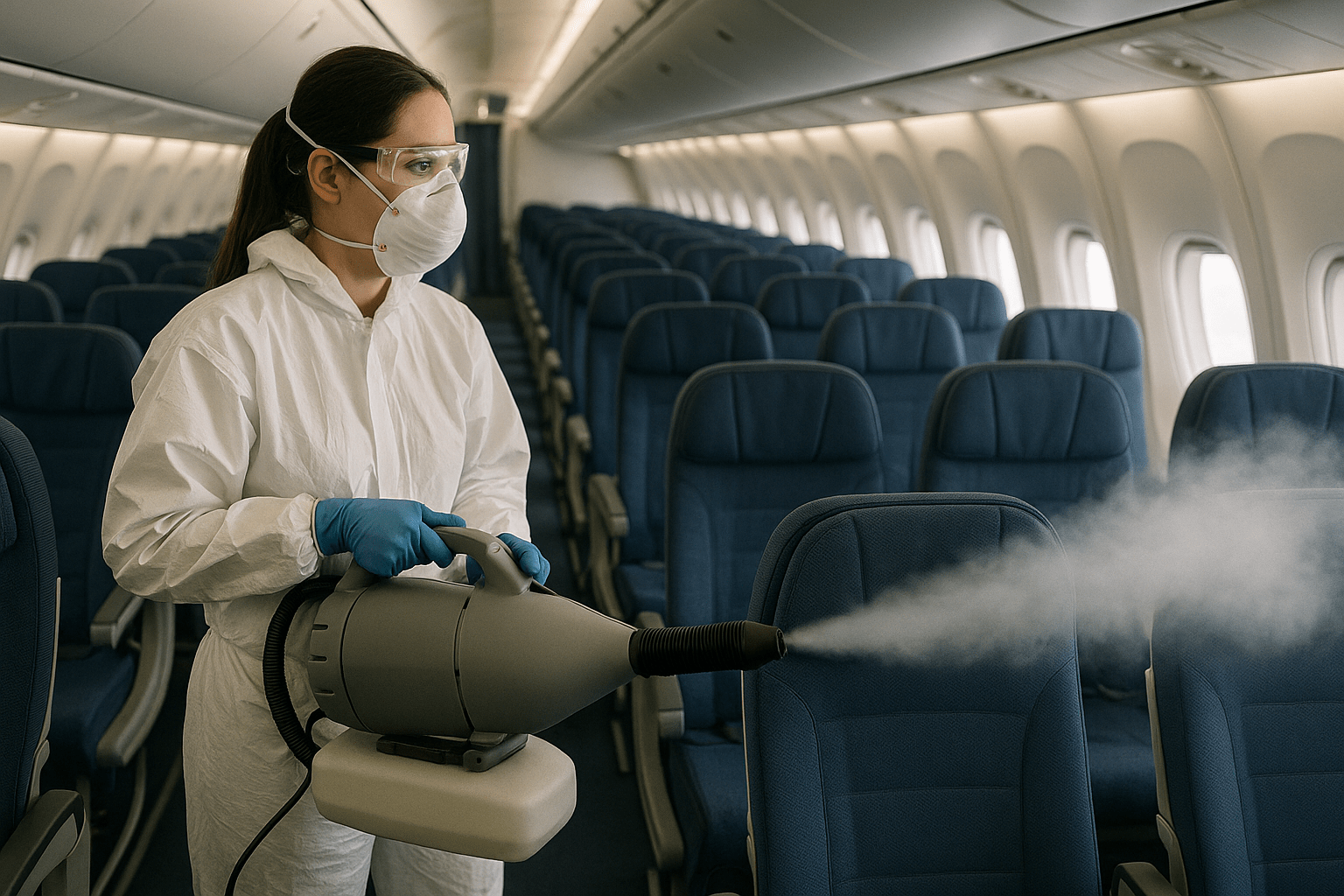Disinfection procedures for aircraft are structured instructions intended to help teams perform cleaning and sanitization tasks efficiently. These protocols, often referred to as Standard Operating Procedures (SOPs), are designed to deliver consistent, high-quality results while minimizing communication errors and ensuring compliance with aviation health and safety standards.

Focus on ceilings, overhead storage bins, reading lights, air vents, sidewalls, windows and shades, passenger seats (including tray tables, armrests, passenger control systems, and decorative trims), storage lockers, partition walls (bulkheads), magazine holders, and cabin crew seating areas.
Disinfection should be performed from the cleanest surfaces to the most contaminated, including the ceiling, side panels, toilet fixtures, waste containers, sinks, and door areas (including handles and any ashtrays).
Clean the ceiling, ovens, coffee makers, boilers, galley storage units, drawers, and trash bins.
In aircraft where the cockpit is separated from the passenger section, all cockpit surfaces should be thoroughly cleaned before preparing the flight.
If crew members exit airport secure areas during layovers (e.g., for hotel stays in high-risk regions), preventive disinfection of the cockpit is advised.
If there is no separation between cockpit and cabin, cockpit disinfection should occur at the same frequency as the rest of the cabin, performed by trained personnel.
All galley equipment, pre-flight safety demonstration tools, communication devices, and cabin crew harnesses must be disinfected prior to flight operations. High-touch items such as interphones must be sanitized before, after, and if needed, during flights. An adequate supply of approved sanitizers should always be available on board.
Seats and seat belts must be thoroughly cleaned and disinfected, with methods varying by seat material:
Remove and professionally clean or machine-wash seat covers, as the woven structure can trap contaminants beyond the reach of surface cleaning.
Clean genuine leather surfaces gently using mild soaps or surfactant-based cleaners, avoiding harsh chemicals that may cause damage. Leather seats are not suitable for dry-cleaning or machine washing.
If protected with a polycarbonate finish, first vacuum or wipe the surface clean. Then, apply an approved disinfectant, let it sit for the manufacturer's recommended time, and wipe off any remaining residue with a damp cloth.
Regularly disinfect commonly touched items such as overhead bin handles, entertainment screens, and passenger control units.

Any emergency equipment, especially oxygen masks, drop-down systems, or therapeutic oxygen devices used in flight, must be thoroughly cleaned and sanitized after each use.
It's important to remove any leftover disinfectant from surfaces, especially from seating and areas where passengers come into contact, to prevent skin irritation or other health risks.
Follow recommended contact times precisely
Thoroughly wipe surfaces after disinfection
Ensure adequate ventilation during and after cleaning
Maintain detailed logs of all chemicals used

Disinfection should be systematic: working from the outer edges inward, moving from the top downward, and ensuring that every surface is carefully covered.
Always work in a methodical pattern to ensure complete coverage
Start from ceiling and work downward to prevent recontamination
Progress from cleaner areas to more heavily soiled ones
Use designated tools for specific areas to prevent cross-contamination
Maintain detailed records of all disinfection procedures performed